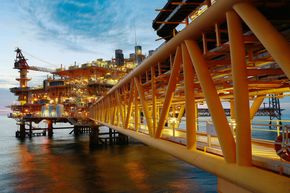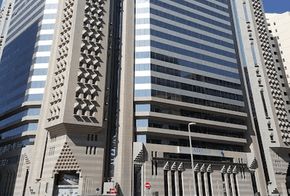- August 29, 2024
- Posted by: Velosi Author
- Categories: HSE, Insights

Introduction
The oil and gas industry has been regarded as one of the fundamentals of the global economy for decades. However, this industry has also been releasing a significant amount of harmful pollutants into the environment. The growing concern for climate change and the deterioration of the environment has been a major pressure on the promotion of sustainable practices within the industry. One powerful weapon that helps organizations confront these challenges today is the Environmental Management Plan (EMP). In this blog, we will provide an overview of what an EMP is, why it is relevant, and the opportunities it offers for the environment and the sector.
What is an Environmental Management Plan (EMP)?
An Environmental Management Plan (EMP), can be defined as a critical concept, which integrates measures and actions aimed at mitigating a project’s negative effects on the environment. EMPs can be further regarded as official documents containing project-specific recommendations regarding measures to be adopted for environmental management during the execution of the proposed project. It can be thought of as a roadmap that enables oil and gas organizations to navigate their way around the environmental overhead. Moreover, an EMP is a plan that portrays how an organization values strategy to minimize its negative contributions to the external environment, thereby ensuring that its activities are sustainable.
The objectives of these plans are mainly to minimize the adverse effects on the environment, to preserve off the natural resources and to work in accordance with environmental standards with an aim to achieve sustainability development goals. The inherent hazards associated with oil and gas operations- oil leakages, effusion, and waste management questions make it critical and thus rewarding to have a robust EMP.
Key Components of an Environmental Management Plan in the Oil and Gas Industry
EMP consists of several elements as the following; all of them are designed together to allocate environmental hazards properly:
- Environmental Impact Assessment (EIA):
The cornerstone of any EMP is an Environmental Impact Assessment (EIA). This is where any organization conducts an assessment of the environmental effects that may or may not occur from the various activities of the business. For instance, where an organization operates in the oil and gas sector, an EIA might evaluate the impacts of oil spills, and the effect of emission of gases to the atmosphere, and effectively manage the dumping of wastes. However, through assessment of these risks’ organizations can set forth strategic implementations to minimize them and, in the process, mitigate harmful effects on the environment.
- Mitigation Measures:
After potential impacts are discovered, the next phase is to determine how they can be minimized or eliminated. These are what are referred to as mitigation measures. In the oil and gas industry, this might include employing technologies for avoiding spillage, enhancing waste handling, or reducing the volume of emissions to the environment. The aim, therefore, is to provide pre-eminent solutions to environmental problems beforehand.
- Monitoring and Reporting:
Overseeing simply entails vigilance to see that the EMP is accomplishing what it was designed to do. This entails frequent monitoring of indicators in the environment for instance the quality of air and water to the expected standard. It is also equally important because it shows that the organization is in some ways reporting and therefore, being environmentally friendly. By sharing the reports regularly, organizations may prove that they are acting in compliance with the necessary regulations and are interning sustainable management approaches towards the environment.
- Employee Training and Awareness:
An EMP depends upon the capability of the expertise conducting it. That’s why training is such a special component of the plan. Employees should be aware of the goals of the EMP, their responsibilities towards it, and the necessity of compliance with standards. It can be seen clearly that when there is a proliferation of understandings within an organization then it is easier to attain environmental goals.
Benefits of Implementing an EMP in the Oil and Gas Industry
Let us further explore critical factors that make having an EMP advantageous for the environment and the organizations involved:
- Environmental Benefits:
First, and most importantly, the well-implemented EMP minimizes the adverse effects that an organization may have on the environment. If risk management is done effectively then lots of pollutants are averted, natural resources are preserved; and wildlife is secured. It also assists the planet and guarantees the organization’s sustainable functioning in the long run. - Economic Benefits:
The advantages are not only ecological. A sound EMP can also help reduce the cost of an organization, for instance through cheaper sources of energy. Being able to manage risks around the environment for a firm reduces cases of fines, cases in court, and costs incurred for the clean-up. Secondly, since the evaluates the use of resources more effectively, the firms can minimize wastage and cut operating expenses. - Reputation and Compliance:
In the modern environment, the previous performance of a firm in terms of the environment matters. A robust EMP signifies to the stakeholders, investors, customers, and regulators that the company is serious about the environmental issue. Also, being environmentally compliant is critical to avoiding legal difficulties and repercussions associated with those violations.
Challenges in Implementing an EMP
- Operational Challenges:
One disadvantage of an EMP is that they may be hard to integrate into existing operations; particularly, where the business is large or complex. - Technological and Financial Constraints:
Financial constraints can be a major factor. The adoption and especially the sustainability of an EMP can be costly, especially where new technologies and physical structures are invested. For some companies, these costs can become quite prohibitive. - Regulatory and Stakeholder Challenges:
There are set rules and regulations that bind stakeholders’ expectations as well. These are important specifications to meet but can be at odds with the organization’s operational objectives, and thus they are usually dealt with and managed differently.
Future Trends in EMP for the Oil and Gas Industry
The specific strategies for mitigation of environmental effects are changing as the oil and gas industry evolves.
- Technological Advancements:
Technological advancements can reduce the level of risk in managing the environment by making it easier and more efficient. These phenomena will feature advancing future EMPs, ranging from advanced monitoring systems to artificial intelligent analytics. - Evolving Regulations:
Environmental regulations are most likely to become strained in the future, including the requirements for EMPs. This might entail increasing the extent of monitoring or ensuring that the measures used for accommodating the problems are more robust. - Global Best Practices:
As the industry expands internationally it would allow the organizations in the industry to study other EMP implementation initiatives around the world. Moreover, implementing best practices can assist in avoiding or, at least, reducing adverse complications and impacts of future regulatory actions on the organization’s environmental impacts.
Conclusion
To conclude, an Environmental Management Plan (EMP) is a very useful tool in the oil and gas industry context. These plans assist organizations in managing their environmental impacts, complying with legal requirements, and promoting ecological sustainability. The scope of possible benefits is vast – ranging from reducing the negative environmental effects of their activities through Environmental Impact Assessments, mitigation measures, monitoring, and training to promote cost efficiency and reliability.
A strong commitment to sustainability is crucial for an effective EMP. As the industry comes under growing pressure to promote more sustainably, the role of EMPs is set to rise. Corporations that embrace and advance their EMPs and use them as a guiding framework will not only stay compliant but also set industry standards for sustainability.
Last but not least, the potential for the further evolution of the global oil and gas industry is held in finding the correct equation between the pursuit of wealth and sustainable development. This balance can only be achieved if the industry develops a strong Environmental Management Plan (EMP) that will guarantee future sustainability.
Stay connected for more blogs!
Please contact us for more information and assistance.




